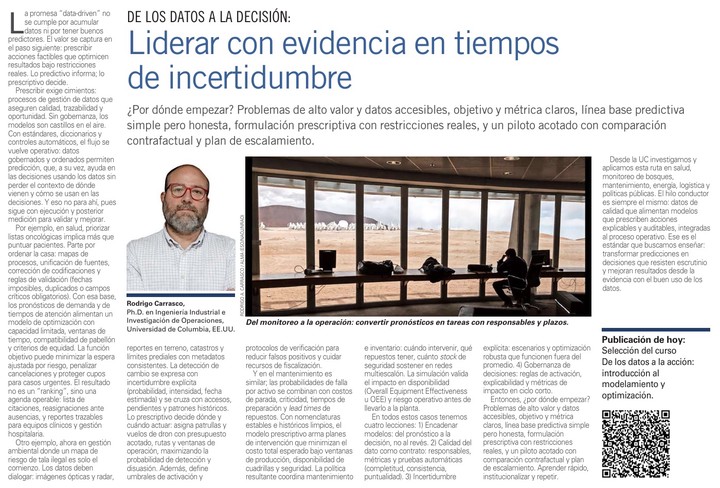
Abstract
How to lead with evidence when uncertainty is the norm – build trustworthy data foundations, model uncertainty explicitly, and use prescriptive analytics to turn insights into defensible decisions.
This opinion column, published in El Mercurio, argues that the value of data work is realized in the prescriptive step: turning predictions into feasible actions under real-world constraints—“the predictive informs; the prescriptive decides.” It lays out what’s required to make that leap: rigorous data governance (quality, traceability, timeliness), explicit treatment of uncertainty (scenarios and robust optimization), short-cycle impact metrics, and decision governance (clear activation rules and explainability). Drawing on examples in health, environmental monitoring, and maintenance, it proposes a practical path: start from high-value problems, set honest baselines, formulate prescriptive models with actual constraints, pilot with counterfactual evaluation, and then institutionalize and scale.